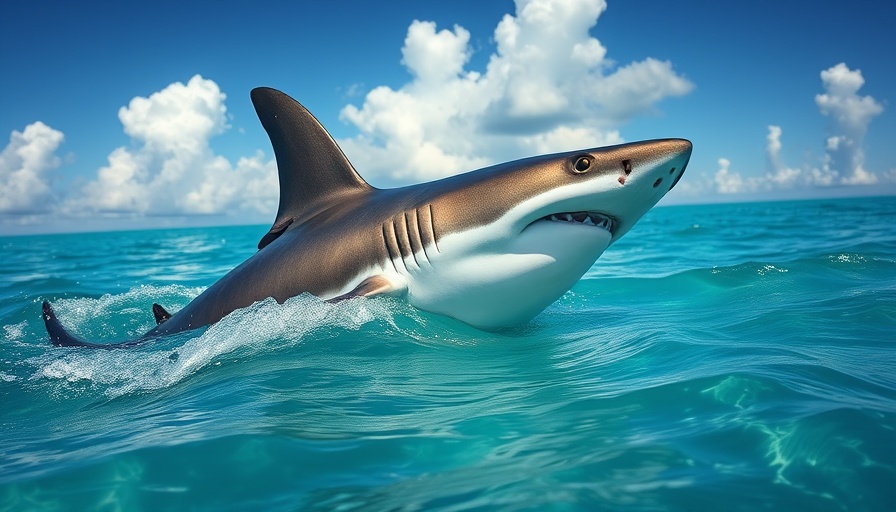
The Legend of ‘Old Hitler’: A Uniquely Florida Tale
Florida's coastal waters are home to many legends, but few resonate as memorably as that of a gigantic hammerhead shark known as ‘Old Hitler.’ This massive creature, often described by fishermen and locals alike, is credited with sparking a mix of fear and fascination among its admirers. How did this shark earn such an alarming moniker? It all began during the tumultuous times of World War II.
The Origins of the Nickname
During the height of World War II, coastal waters off Florida were not just known for their recreational allure but also for the lurking threat of German submarines that sunk American vessels. To protect shipping routes, U.S. military blimps patrolled the area, resulting in countless sightings of unidentified objects, many of which turned out to be hammerhead sharks swimming near the surface. Fishermen, reporting these encounters, began to weave an intricate tapestry of tales around these predators, giving rise to the legend that continues to intrigue shark enthusiasts today.
Fisherman Folklore: Scarred Stories
As the war faded, so too did the threat of enemy submarines, but the stories of enormous hammerheads persisted, fueled by fishermen's encounters with large fish that haunted the Gulf Coast. Anglers described a shark that was "as dark as a shadow and covered in scars," suggesting it had fought ferociously against both the sea and man. Reports of machete wounds and even knives stuck in its fin illustrate legends that hark back to encounters with boats and netting incidents. One particularly strange story describes a scar on the shark’s head resembling a swastika, supposedly inflicted during its turbulent life.
The Scientific Realities
Beyond folklore, there is scientific merit to the tales surrounding great hammerhead sharks. Known for their size—often reaching up to 20 feet and weighing over 2,000 pounds—these sharks are indeed a significant presence along Florida’s Gulf Coast. According to the Florida Fish and Wildlife Conservation Commission (FWC), great hammerheads rank seventh for unprovoked attacks on humans, bringing a nuanced reality to the shark lore. Their reputation often frightens beachgoers, but these apex predators play a crucial role in our ocean’s ecosystem.
Cultural Impact and Modern Interpretations
As ‘Old Hitler’ continues to swim through the imaginations of those who venture along Florida's beaches, the cultural implications of such a nickname evoke discussions about perception and fear surrounding sharks. As Shark Week approaches, bringing awareness of both the beauty and the potential danger of these creatures, we find ourselves in a conversation that reaches beyond simple folklore. Are sharks to be feared, or are they essential to the health of our oceans?
Takeaways for Shark Week Enthusiasts
As we immerse ourselves in stories of legendary sharks, it brings to light the importance of understanding these creatures in reality. For enthusiasts, this means recognizing that while tales like ‘Old Hitler’ may thrill, they must also not distract from the conservation issues surrounding shark populations worldwide. Engaging in local discussions and supporting marine conservation can create waves much larger than any single fish tale. So, as you prepare for Shark Week, remember to appreciate the broader implications of these marine titans.
 Add Row
Add Row  Add
Add 




 Add Row
Add Row  Add
Add 

Write A Comment